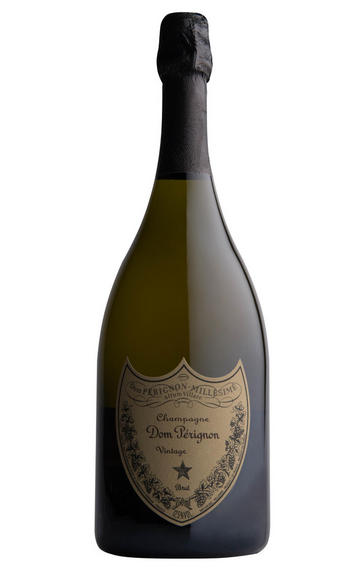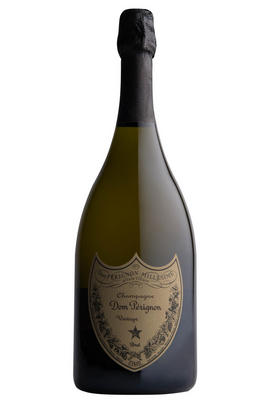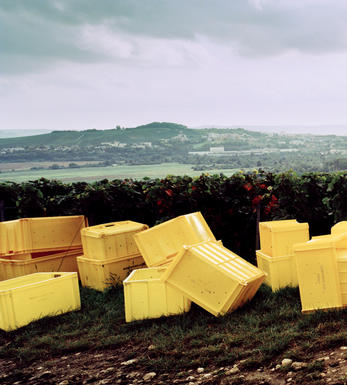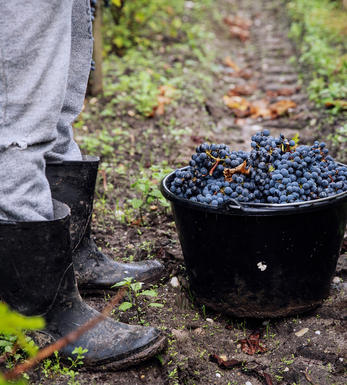
2004 Champagne Dom Pérignon, Brut

Critics reviews
The 2004 Dom Pérignon is a totally different beast. It is the product of a very long and cool growing season marked by heavy summer rains in some sectors of the region and then ideal conditions through to harvest. After a brutally torrid 2003, the vines responded by setting a huge crop.
2004 remains the most abundant vintage in the history of Champagne. The best wines, though, have always impressed me with their laser-like cut and focus. That’s exactly what comes through in the 2004 Dom Pérignon. Tasted from magnum, the 2004 shows all the year’s linear energy and crystalline precision but with that extra magic from fermentation and longer ageing in the big bottle.
The 2004 has long been one of my favourite Dom Pérignons. From magnum, it is especially captivating.
Drink 2022 - 2042
Antonio Galloni, Vinous.com (December 2022)
Three-litre Jéroboam. A vintage described by Richard Geoffroy as an ’a no-brainer – you just had to be wise enough to step back’. The biggest ever vintage – still.
Real richness of age on the nose – even a suggestion of crème pâtissière. This is a real classic with massive edge and excitement—lovely neat, saline finish.
Drink 2015 - 2030
Jancis Robinson MW, JancisRobinson.com (December 2018)
Yet another masterpiece created by Richard Geoffroy. Unmistakable Dom Pérignon style with unparalleled silkiness throughout the palate. The mousse is worthy of its chapter, and the elegance is striking. Nice minerality and floral notes with citrus overtones. Slightly short now, but time will fill in the small gaps at the beginning of life. This time it tasted intensely toasty and relatively close to the 1983 when I tasted that vintage for the first time at the same age as the 2004 is now.
Drink 2014 - 2030
Richard Juhlin, Decanter.com (November 2018)
About this WINE

Dom Perignon
Dom Pérignon was the 17th century Benedictine monk who has gone down in history as the person who "invented" Champagne. His name was originally registered by Eugène Mercier. He sold the brand name to Moët & Chandon, which used it as the name for its prestige cuvée, which was first released in 1937.
A rigorous selection process in both the vineyard and winery ensures that only the best grapes go into Dom Pérignon champagne. Chardonnay and Pinot Noir are used in roughly equal proportions without one variety dominating the other.
In its youth, Dom Pérignon shows incredibly smooth, creamy fruit with perfect balance and weight. As it ages, it takes on wonderfully toasty aromas and a finesse equalled by very few of the other Grandes Marques.
Since 2014 Dom Pérignon has no longer been using the term oenothèque for its late-release Champagnes, but the word Plenitude. This style represents Dom Pérignon champagne that is left in contact with its lees and does not evolve in a linear fashion, but ages in a series of stages, producing “windows of opportunity, or plenitudes” when the Champagne can be disgorged and released to bring consumers a different expression of the same vintage.
There are three plenitudes in the life of a given vintage: the first plenitude spans between seven to eight years after the vintage, which is when Dom Pérignon Vintage is released, while the second one arrives between 12 and 15 years – which was previously the first oenothèque release, but from now will be branded as P2. The third window comes after around 30 years, when the Champagne has spent more than 20 years on its lees, which will now be termed as P3.

Brut Champagne
Brut denotes a dry style of Champagne (less than 15 grams per litre). Most Champagne is non-vintage, produced from a blend from different years. The non-vintage blend is always based predominately on wines made from the current harvest, enriched with aged wines (their proportion and age varies by brand) from earlier harvests, which impart an additional level of complexity to the end wine. Champagnes from a single vintage are labelled with the year reference and with the description Millésimé.
Non-vintage Champagnes can improve with short-term ageing (typically two to three years), while vintages can develop over much longer periods (five to 30 years). The most exquisite and often top-priced expression of a house’s style is referred to as Prestige Cuvée. Famous examples include Louis Roederer's Cristal, Moët & Chandon's Dom Pérignon, and Pol Roger's Cuvée Sir Winston Churchill.
Recommended Producers : Krug, Billecart Salmon, Pol Roger, Bollinger, Salon, Gosset, Pierre Péters, Ruinart

Champagne blend
Which grapes are included in the blend, and their proportion, is one of the key factors determining the style of most Champagnes. Three grapes are used - Pinot Noir, Chardonnay and Pinot Meunier.
26% of vineyards in Champagne are planted with Chardonnay and it performs best on the Côtes des Blancs and on the chalk slopes south of Epernay. It is relatively simple to grow, although it buds early and thus is susceptible to spring frosts. It produces lighter, fresher wines than those from Burgundy and gives finesse, fruit and elegance to the final blend. It is the sole grape in Blancs de Blancs, which are some of the richest long-lived Champagnes produced.
Pinot Noir accounts for nearly 40% of the plantings in Champagne and lies at the heart of most blends - it gives Champagne its body, structure, strength and grip. It is planted across Champagne and particularly so in the southern Aube district.
The final component is Pinot Meunier and this constitutes nearly 35% of the plantings. Its durability and resistance to spring frosts make the Marne Valley, a notorious frost pocket, its natural home. It ripens well in poor years and produces a soft, fruity style of wine that is ideal for blending with the more assertive flavours of Pinot Noir. Producers allege that Pinot Meunier lacks ageing potential, but this does not deter Krug from including around 15% of it in their final blends.


Buying options
Add to wishlist
Description
The 2004 Dom Pérignon is a totally different beast. It is the product of a very long and cool growing season marked by heavy summer rains in some sectors of the region and then ideal conditions through to harvest. After a brutally torrid 2003, the vines responded by setting a huge crop.
2004 remains the most abundant vintage in the history of Champagne. The best wines, though, have always impressed me with their laser-like cut and focus. That’s exactly what comes through in the 2004 Dom Pérignon. Tasted from magnum, the 2004 shows all the year’s linear energy and crystalline precision but with that extra magic from fermentation and longer ageing in the big bottle.
The 2004 has long been one of my favourite Dom Pérignons. From magnum, it is especially captivating.
Drink 2022 - 2042
Antonio Galloni, Vinous.com (December 2022)
wine at a glance
Delivery and quality guarantee